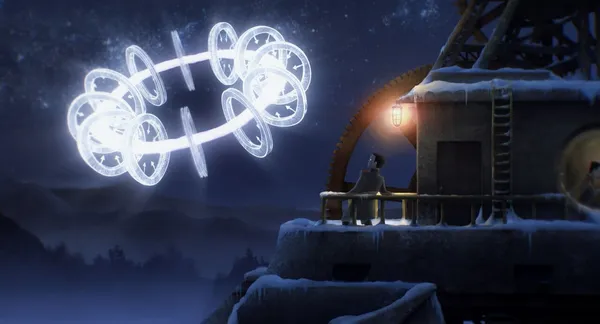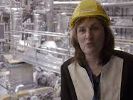Eye For Film >> Movies >> Let There Be Light (2017) Film Review
Let There Be Light
Reviewed by: Jennie Kermode

When wide-eyed newsreaders talk, as they often do, about science fiction becoming science fact, they're missing the point. There is no human endeavour that is not begun in the imagination, and the science fiction genre developed in large part as means for people who had strong ideas but not the means to realise them to bring them to the world's attention. When ideas are dismissed as 'mere science fiction' it's generally because an insufficient number of people can imagine the process through which they might become reality. Such ideas have included space flight, organ transplants and the internet.
One idea frequently talked about in this way is nuclear fusion power - to put it in simple terms, the process of creating a miniature sun on Earth but keeping it at a manageable temperature. Success in this venture would end our energy problems at a stroke and massively reduce pollution, helping us to bring climate change under control and quite likely reducing global conflicts, as there would be less to fight over. For this reason, it's one area of science which has seen significant international cooperation, even between East and West during the Cold War. But it has never received adequate finance, largely because there is very little public awareness or understanding of it. This documentary, whose science fiction connection was acknowledged with a screening at Fantasia this year, aims to set that straight.

Polished, informative and accessible, Let There Be Light uses everyday language to explain the issues surrounding fusion technology and elucidate something of what scientists working on these projects are struggling with. There's a simple explanation of the difference between nuclear fission and fusion, and an introduction to the leading experimental reactor work in Russia and France. Several leading figures discuss their own contributions. In one scene, a scientist explains to a group of workmen what the plant they are constructing will be used for; when they say that feel honoured he tells them that they, as much as he is, are helping to give humanity a future.
With its wide blue skies and shining arcs of steel, this looks remarkably similar to the UN's information films, but short shrift is given to politicians who lack the vision to appreciate what is at stake and why it's worth investing in something that could take decades to complete. Those who do get it come from all parts of the political spectrum, and from all around the world. Angela Merkel speaks passionately about the clean energy future that fusion could give us. When all seems lost, Malaysia, which has a GDP of just $296.4bn, manages to stump up funds to keep the work going.
Due reference is made to the composite nature of projects like this, and to the fact that politicians, scientists, technicians, construction workers and managers all need to cooperate in order for it to make progress. The film doesn't pretend that results are just around the corner. It could be ten years. It could be 50. Merkel makes a bold attempt to explain to potential investors that academic work isn't something where one can just put money in and be guaranteed a particular result in a particular amount of time. The film sets out the problems fusion has run into in the past, acknowledging the dead ends and the controversies that remain at the theory level. It also tries to get across how the really big sums of money required are actually really tiny compared to what the world spends on other things. With the whole world standing to benefit, the researchers need less than $2.00 per person per year.
Despite the high stakes and world-changing potential, the film comes across as rather dry. This is perhaps inescapable as it strives to avoid sensationalism and make a convincing, grounded argument, but it means that it may lose some viewers along the way. It also tends to bombard the viewer with information, dense visuals, text on screen and narration all at the same time, and this is likely to divide audiences. Nevertheless, it provides a solid introduction to the subject and a useful update on the state of play for those already familiar with the work. It illustrates clearly that scientific subjects are not inherently hard to understand, and that the more people who make the effort to engage with such ideas, the more likely they are to materialise.
Reviewed on: 27 Jul 2017

















